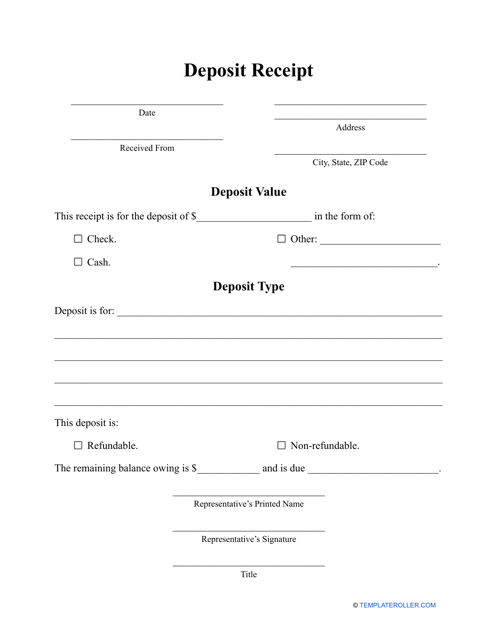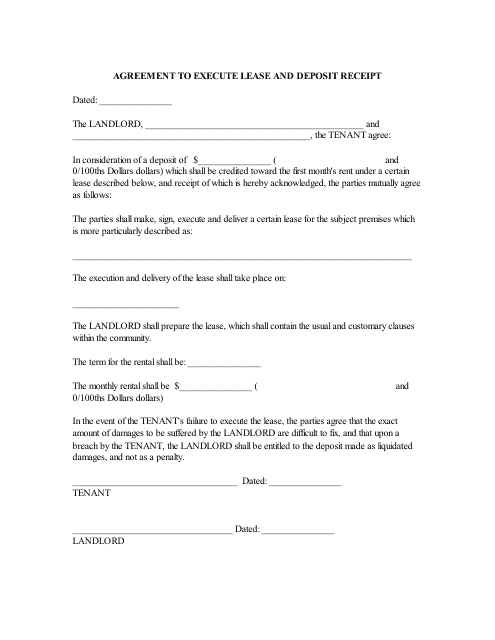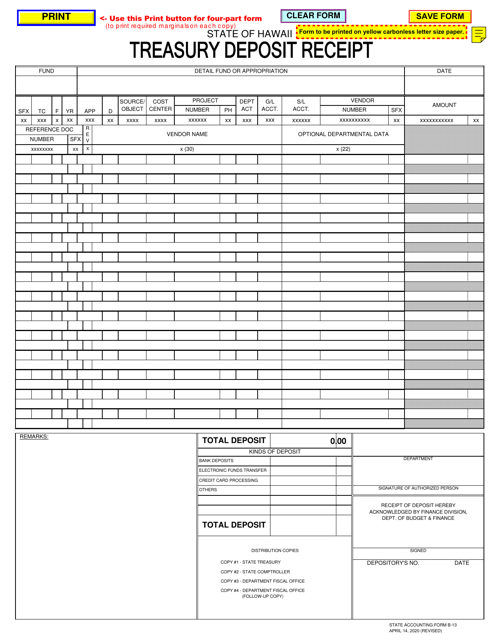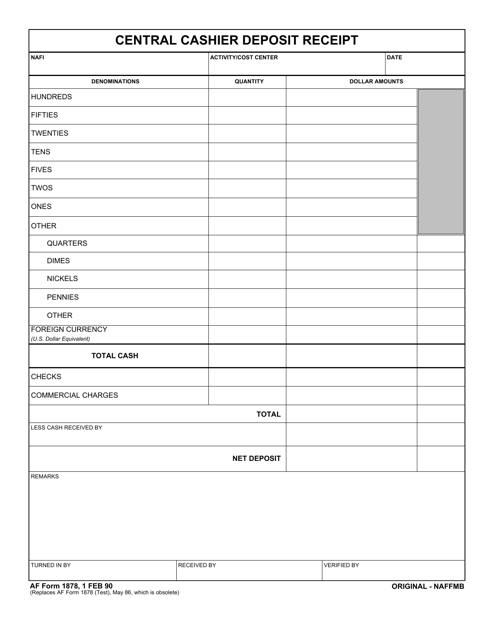Deposit Receipt Templates
When completing a financial transaction that involves a deposit, it is crucial to keep a record of the transaction for proof and reference. A deposit receipt, also called a deposit receipt template or printable deposit receipt, is a document that serves as evidence of a payment made to secure a transaction or rental agreement.
At times, a deposit receipt may take the form of an Agreement to Execute Lease and Deposit Receipt Template, which outlines the terms and conditions of a rental agreement while also acknowledging the payment made. In other instances, it may be a more formal document like the AF Form 1878 NAF Central Cashier Deposit Receipt, or a Form B-13 Treasury Deposit Receipt specific to the state of Hawaii.
A deposit receipt not only provides proof of payment, but it also offers protection and peace of mind for both parties involved in the transaction. Landlords can turn to these receipts as tangible evidence of a tenant's commitment to a lease, while renters can ensure their deposit is properly recorded and accounted for.
Whether you're a landlord, tenant, or anyone in need of documenting a deposit, having a deposit receipt is a smart decision. By using a deposit receipt template or printable deposit receipt, you can keep track of your financial transactions and protect your interests in a reliable and organized manner.
Documents:
5
This type of template is handed out to an individual after they have placed an initial fee (known as a deposit) to reserve the goods or services they wish to acquire.
This document is a template used to formalize the agreement to execute a lease and provide a deposit receipt. It specifies the terms and conditions of the lease agreement and provides proof of payment for the security deposit.
This form is used for recording cash deposits made by employees of the Non-Appropriated Fund (NAF) Central Cashier.




